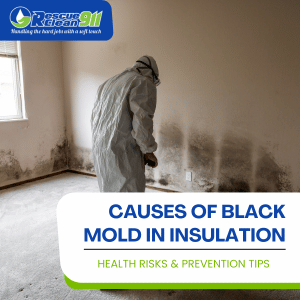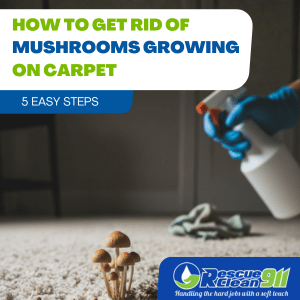If you’re wondering what are the symptoms of exposure to black mold from water?, It’s important to understand that black mold, scientifically known as Stachybotrys chartarum, is a type of fungus that thrives in humid and moist environments.
It commonly grows on organic and porous materials, such as ceiling tiles, wood, paper, and drywall. Still, it can also grow on certain hard surfaces, like concrete and plaster, when exposed to excessive moisture. Homes with leaky pipes, water leaks, or other moisture problems are particularly at risk.
What Are the Symptoms of Exposure to Black Mold from Water?
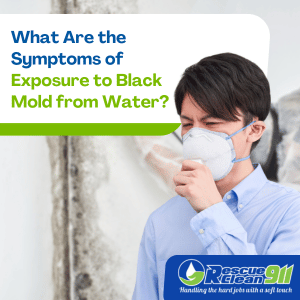 Exposure to black mold can lead to a wide range of health effects, depending on individual risk factors, such as a compromised immune system, asthma, or allergic conditions. Understanding these symptoms of mold exposure is critical for early intervention.
Exposure to black mold can lead to a wide range of health effects, depending on individual risk factors, such as a compromised immune system, asthma, or allergic conditions. Understanding these symptoms of mold exposure is critical for early intervention.
Respiratory Symptoms
People exposed to black mold may experience breathing issues, including:
Coughing
Wheezing
Shortness of breath
Asthma symptoms in those with preexisting conditions
Children, the elderly, and individuals with weakened immune systems are particularly vulnerable to respiratory symptoms caused by black mold exposure.
Allergic Reactions and Mold Allergy Symptoms
Some individuals may experience an allergic reaction to black mold or other common indoor molds, resulting in mold allergy symptoms such as:
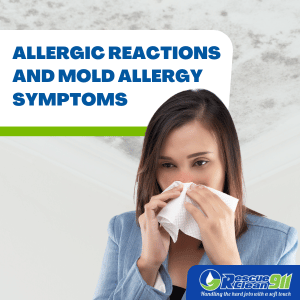 Runny nose
Runny noseStuffy nose
Watery eyes
Itchy skin
These reactions may also be triggered by household mold or moldy hay in homes with poor ventilation or high humidity levels.
Nausea and vomiting
Nausea and vomiting are other possible symptoms of black mold exposure.
If you think you may be exposed to black mold, seek medical help immediately. Exposure to black mold can cause serious health problems, so getting treated as soon as possible is important.
Other Health Effects
Black mold can also cause:
Black mold can cause skin irritation, such as redness, itching, and rashes.
Headaches and muscle aches
Nausea and vomiting
Chronic health problems due to mold toxins affecting the immune system
A dysregulated immune system may occur when the immune system overreacts to mold spores, leading to longer-term health concerns such as sick building syndrome.
Where Does Black Mold Come From?
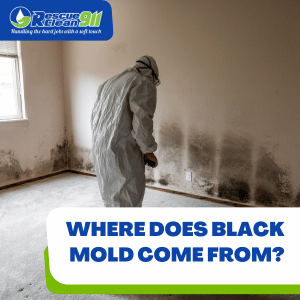 Black mold develops in damp, humid environments. Common sources include:
Black mold develops in damp, humid environments. Common sources include:
Water leaks and leaky pipes
Excess water accumulation from flooding or plumbing issues
Porous materials, like ceiling tiles, drywall, and carpets
Organic matter, including wood, paper, and animal matter
Poorly maintained air conditioners and HVAC systems
Even if mold isn’t immediately visible, tiny spores can become airborne, contaminating your home and causing respiratory symptoms in sensitive individuals. Mold testing can help confirm the presence of black mold spores and assess the risk factors in your home.
How Can Black Mold Affect Human Health?
Black mold exposure can impact human health, particularly for people with weakened immune systems. The health effects may include:
Common symptoms like stuffy nose, runny nose, and watery eyes
Respiratory symptoms, including coughing, wheezing, and breathing issues
Asthma symptoms or worsening of preexisting conditions
Allergic reactions to mold spores, resulting in allergy symptoms
Individuals with a family history of allergies, asthma, or other health conditions are at higher risk for serious health issues from black mold exposure.
Identifying Mold in Your Home
Signs of a Mold Problem
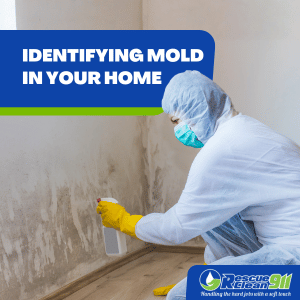 Visible black mold growth or other discolored patches
Visible black mold growth or other discolored patchesMusty or earthy smell
Condensation or excessive moisture on walls, ceilings, or ceiling tiles
Stains near water leaks or leaky pipes
Early detection is critical. Mold in your home can appear in areas such as:
Ceiling tiles, walls, and floors
Around leaky pipes or water leaks
Areas with excessive moisture, poor ventilation, or high humidity levels
Spaces with household mold or moldy hay
A persistent earthy smell or musty odor is also a warning sign. Professionals offer mold testing to identify common indoor molds before they become a serious mold problem.
How to Safely Remove Mold
Proper mold cleanup is essential to prevent further health effects:
Protect Yourself: Wear rubber gloves, a mask, and protective clothing to avoid tiny spores.
Isolate the Area: Keep children and pets away. Open windows for fresh air.
Remove Contaminated Materials: Porous items like ceiling tiles, carpets, and drywall may need to be discarded.
Clean Hard Surfaces: Use mold inhibitors or a mix of bleach solution for safe mold removal.
Dry the Area Completely: Use dehumidifiers or exhaust fans to eliminate remaining moisture.
Control Mold: Regularly check for leaks, water leaks, or signs of mold growth.
A professional mold remediation company offers comprehensive black mold removal, ensuring that mold spores are safely eliminated through high-efficiency particulate air (HEPA) filtration.
Call us at 561-782-1392
What to do if you think you’ve been exposed to black mold
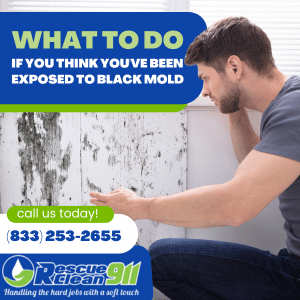 If you think you have been exposed to black mold, there are a few things you can do:
If you think you have been exposed to black mold, there are a few things you can do:
Get out of the area immediately and into the fresh air.
Call your local health department and report the incident.
See a doctor if you start feeling sick.
If you have been exposed to black mold, it is important to act quickly and get out of the area. You should also call your local health department to report the incident.
If you start feeling sick, it is important to see a doctor right away. Treating black mold exposure early can help prevent serious health problems.
How can you minimize your exposure to mold spores?
There are several steps you can take to minimize your exposure to moldy water.
First, make sure to wear protective clothing, such as gloves and a mask, when cleaning up any water that is contaminated with mold.
Additionally, try to avoid breathing in the spores by avoiding any contact with the moldy water.
Finally, make sure to dry the area completely after cleaning it up to prevent any further growth of the mold.
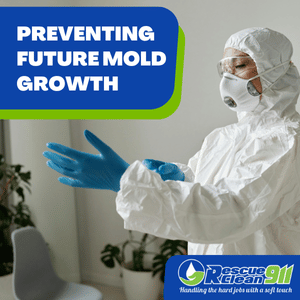 Preventing Future Mold Growth
Preventing Future Mold Growth
Preventive measures can minimize mold exposure:
Maintain low humidity levels and proper ventilation
Use exhaust fans in kitchens and bathrooms
Keep your home dry and allow fresh air in regularly
Fix water leaks and leaky pipes promptly
Apply mold inhibitors on susceptible surfaces
These steps help reduce the risk factors for mold-related health problems and protect families from allergic reactions or respiratory symptoms.
When to Seek Medical Help
If you notice symptoms of mold exposure, seek medical attention immediately, especially if you have:
Asthma symptoms or other respiratory conditions
Weakened immune systems
A family history of mold allergy or other immune system disorders
Doctors may recommend blood tests or other evaluations to determine the extent of exposure. Over-the-counter medications may alleviate allergy symptoms, but professional intervention is crucial for serious health issues.
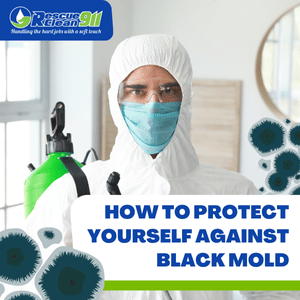 How to protect yourself against black mold
How to protect yourself against black mold
Black mold, or Stachybotrys chartarum, is darker and a serious issue that can cause health problems. It is important to know how to protect yourself against it.
Make sure to keep your home dry and well-ventilated.
If you see black mold or any other kind of mold, make sure to clean it up immediately.
Do not touch the mold without protection, such as a mask and gloves.
If you suspect you have been exposed to black mold, consult a doctor immediately. Mold can compromise the immune system, so it is essential to seek medical help if you suspect you have been exposed.
Tips to Control Mold in Your Home
Open windows for fresh air circulation
Clean and dry hard surfaces regularly
Use exhaust fans in bathrooms and kitchens
Maintain your air conditioner and replace filters
Remove or replace ceiling tiles and porous materials affected by water leaks.
Consider using mold inhibitors on walls and furniture
Effective control of mold measures not only improves indoor air quality but also reduces allergy symptoms, respiratory symptoms, and the risk of sick building syndrome. You can prevent mold growth in your home by following these control tips.
Protecting Your Home and Health
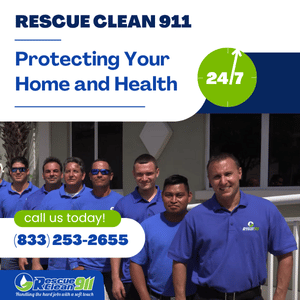 Black mold is more than an unsightly nuisance. It’s a serious health condition that can affect anyone, especially those with weakened immune systems or respiratory issues.
Black mold is more than an unsightly nuisance. It’s a serious health condition that can affect anyone, especially those with weakened immune systems or respiratory issues.
Recognizing mold allergy symptoms, identifying mold growth, and acting quickly to remove mold are crucial steps to ensure human health and a safe living environment.
Professional mold removal services, combined with preventive measures like proper ventilation, humidity control, and fresh air, can safeguard your home against common indoor molds and the health effects of exposure to mold.
You can call us at 561-782-1392 for indoor mold (black mold infestation). We ensure the safety of toxic black mold from water removal in your home.
If you suspect black mold resulting from water damage in your home, contact a certified mold remediation company immediately to minimize health risks and prevent future mold growth. Learn more about what are the symptoms of exposure to black mold from water.

